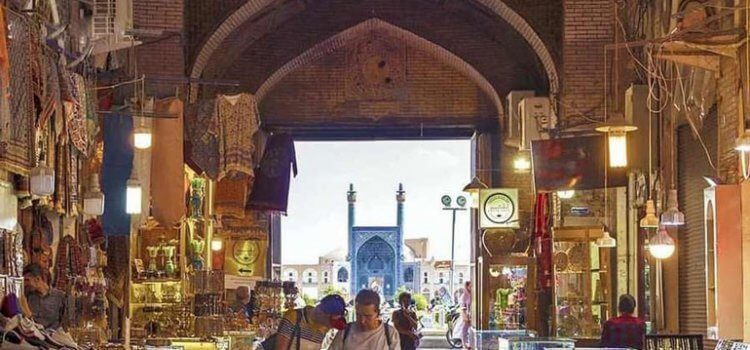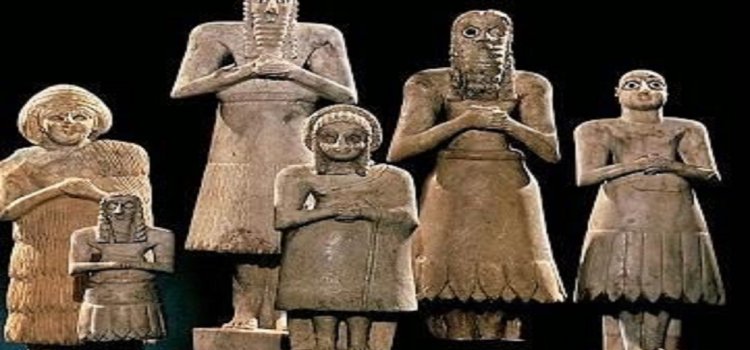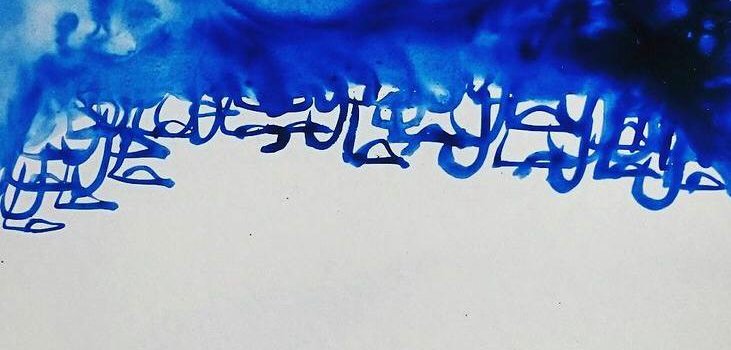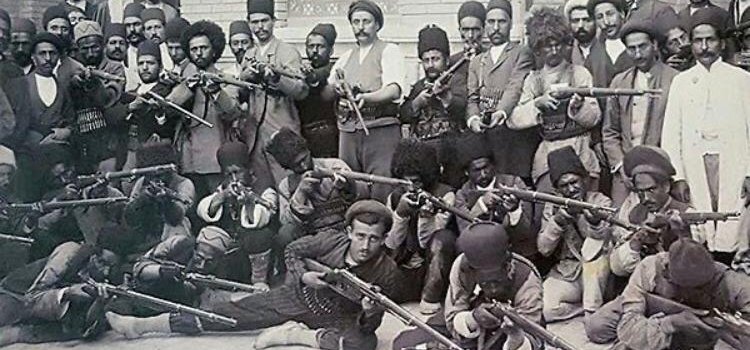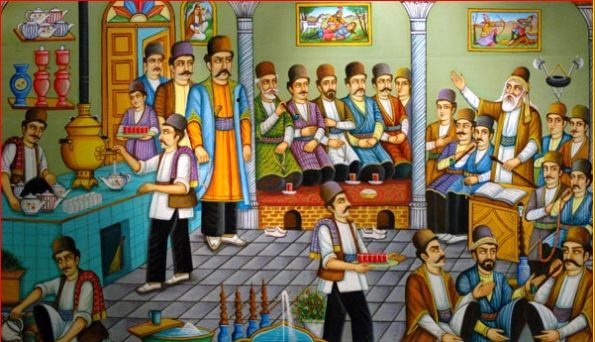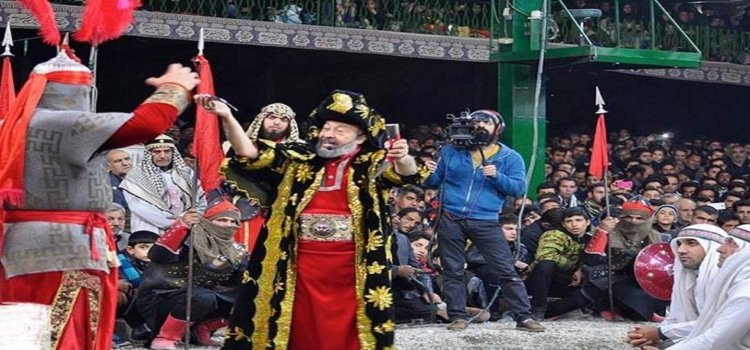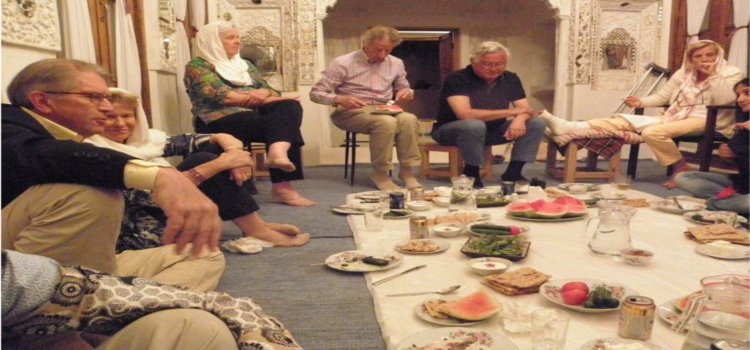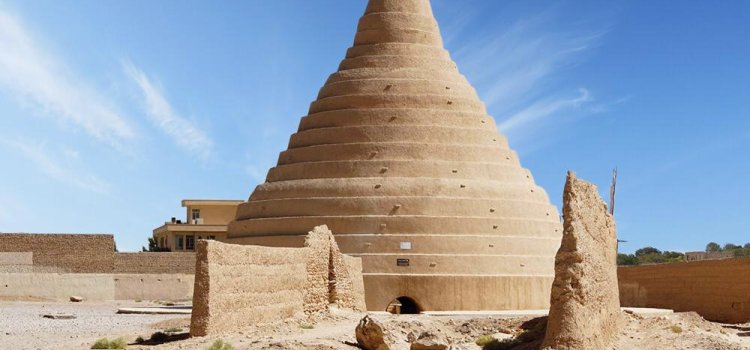The Story of Allahverdi Khan
Allahverdi Khan (1560-1613) was originally a Christian born Georgian, from the Undiladze family. Like many other Georgians, he was captured as a prisoner of war during one of the Caucasian campaigns of Shah Tahmasp I.
Allahverdi Khan (1560-1613) was originally a Christian born Georgian, from the Undiladze family. Like many other Georgians, he was captured as a prisoner of war during one of the Caucasian campaigns of Shah Tahmasp I. Then, he converted to Islam and served as a soldier in the “Gholam” (servant) army, a special military force created by Shah Abbas I out of Christian captives. The purpose of this military unit was to curb the unlimited power of Qizilbash, the core of the Safavid military aristocracy.
However, this not much important servant gradually climbed to the top of ladder. First, he played an important role in the conspiracy against the powerful minister and king-maker Morshed Gholi Khan Ostajlou, whom Shah Abbas had condemned to death in secret. As a reward, he was appointed as the governor of Jorpadangan, a city near Isfahan, the capital of the Safavids. Soon after, he was chosen as the commander-in-chief of Gholam military, thus becoming one of the five principal officers in the Safavid administration by 1595/6. In the same year, he was designated as the governor of Fars, an act that made him the first gholam to attain equal status with the Qizilbash amirs.
During his life, Allah Verdi Khan commanded the Safavid army in many important battles. For example, the Battle of Sufiyan, where the Safavids devastated the army of Ottoman invaders.
Allah Verdi Khan had gained so much respect from Shah Abbas that when he died, the king personally accompanied his bier to the place where the corpse was ritually washed and prepared for burial. He was buried in a magnificent in Mashhad, the holiest city of Iran, beside the tomb of Imam Reza.
In his lifetime, Allah Verdi Khan patronized the construction a number of monuments and charitable foundations. Apart from Si-o-Se Pol, his legacy includes a large double dam near Sarab; a fortification around a village in Fars; the qeysarie bazaar, or royal market, of Lar; a magnificent mansion near Nahavand for Abbas I; and the theological school of Khan in Shiraz.
Qeysarie Bazaar
Qeysarie Bazaar, also known as the Royal Bazaar or the Grand Bazaar of Isfahan, is located on the northern side of the Naghsh-e Jahan Square.
Qeysarie Bazaar, The Grand Bazaar of Isfahan
Qeysarie Bazaar, also known as the Royal Bazaar or the Grand Bazaar of Isfahan, is located on the northern side of the Naghsh-e Jahan Square. It is one of the first constructions built in the Naghsh-e Jahan Square, completed in 1605 AC.
The majestic entrance of the Qeysaie Bazaar (completed in 1617 AC) is decorated with eye-catching faience mosaic work. The spandrels are decorated with the image of a mythic creature: a being composed of a human head and a tiger body, shooting its dragon tail. Actually, the mythic symbol represents the ninth astrological, known as Sagittarius. Historians believe that Isfahan was founded in the ninth of the year, and that is why it appears on the spandrels at the top of the Qeysarie Gate.
In the middle of the portal, there are three frescos: the one on the west represents Shah Abbas hunting, the one in the middle shows Shah Abbas fighting the Uzbeks and the third one, on the east, demonstrates Europeans in the Safavid court. Below this frescos, there is a window which once was part of a Sharbat-sara (literally “syrup house”), where the king and his guests used to gather to drink and enjoy the eye-catching view of the Naghsh-e Jahan Square. Nowadays, this building has turned into a museum in which you can enjoy the works of modern Iranian artists. Also, it includes a tea-house, on the roof of the Bazaar, where you can sit, order a drink and enjoy the view of the square.
Flanking Qeysarie’s portal, there were two structures called Naqāreh-Khāneh (Timpani House), used to announce the time at dawn and sunset by playing trumpets and also timpani. Of these structures, there is no trace today.
The Qeysarie Bazaar itself includes a large number of roofed lanes, all lined with shops or hojrehs. At special intervals, usually four lanes meet and make a chahār-sūq. These chahār-sūqs are usually covered with a brick dome and function roughly as a crossroad or square, connecting different parts of the Qeysarie Bazaar together.
In addition to the main corridors, Qeysarie Bazaar is marked by different Saraas, Timchehs and Caravanserais which mostly hold workshops, storehouses and offices of some Bazaaris or merchants working in the bazaar. We strongly advise you to visit Timche Malek, a lavishly decorated Qajar-era building in the Bazaar.
All in all, the Qeysarie Bazaar makes an attraction which every traveler coming to Isfahan should make sure to visit. It is one of the biggest and most splendid bazaars in Iran, providing you with all types of Iran’s souvenirs. As you cross one lane, the fragrance of high-quality spices revitalizes your soul; another lane invites you to feast your eyes on the colorful designs of world-quality carpets; and in other lanes you will come across such beautiful handicrafts the examples of which you cannot find anywhere else in the world. Most important of all, the Qeysarie Bazaar is one of the best places where you can make connections with the local people and immerse yourself in the thousands-year-old culture of Isfahanian people.
Qeysarie Bazaar, also known as the Royal Bazaar or the Grand Bazaar of Isfahan, is located on the northern side of the Naghsh-e Jahan Square.
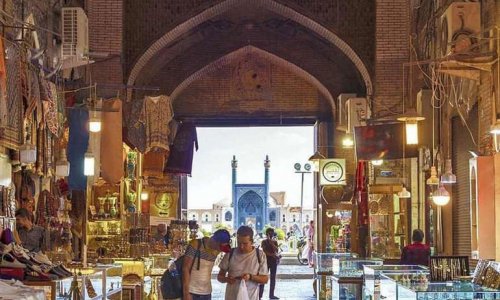
The trading posts of the empires in antiquity
“The Babylonians, now Iraqis, bought pigments, iron, copper, tin and wine from Asia Minor, today’s Turkey.
They also bought alum from Egypt and Syria to color wool and make glass.
The trading posts of the empires in antiquity
“The Babylonians, now Iraqis, bought pigments, iron, copper, tin and wine from Asia Minor, today’s Turkey.
They also bought alum from Egypt and Syria to color wool and make glass.
“Egypt exported luxury goods, in gold, ivory and ebony.
📍Syria and Phenicia which corresponds to Lebanon, exported cedar wood and glass objects.
📍The Sogdians, now known as Uzbeques, and Bactria, part of present-day Afghanistan, traded in lapis lazuli, and Choresmia, located in northeastern Iran, sold turquoise.
Gold, ivory and aromatic oils came from India and olive oil, wine and ceramics from Greece.
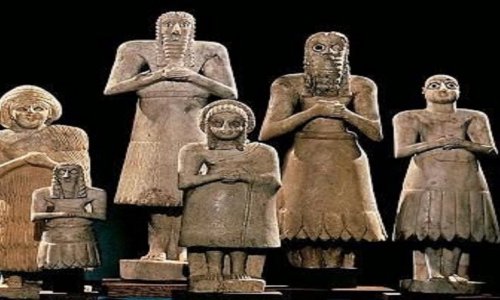
Omar Khayyam
18 May is the day of commemoration of the illustrious Hakim Omar Khayyam.
He was a philosopher, mathematician, astronomer and poet in the 11th century.
Omar Khayyam
18 May is the day of commemoration of the illustrious Hakim Omar Khayyam
He was a philosopher, mathematician, astronomer and poet in the 11th century.
He is considered one of the greatest mathematicians of the Middle Ages. Omar Khayyam is notably the instigator of the solar calendar, still used in Iran.
But his fame is mainly due to the writing of his quatrains, Rubaiyat, often cited in the West for their skepticism. They would conceal, according to Idries Shah, “mystical pearls”, making Khayyam a Sufi. He is one of the most popular and widely read Persian poets around the world.
This large audience is due to a first translation of his works into English by Edward Fitzgerald, in 1859.
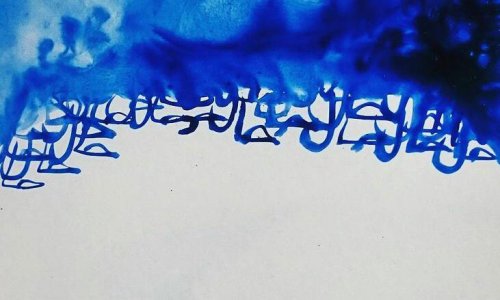
A page of iranian History
1909, Iran, the first Middle Eastern country to have a constitution since 1906, finds itself in chaos.
On the one hand, the king, supported by the Russians and taking advantage of the support of the Cossack brigade
A page of iranian History
1909, Iran, the first Middle Eastern country to have a constitution since 1906, finds itself in chaos.
On the one hand, the king, supported by the Russians and taking advantage of the support of the Cossack brigade, abdicates in favor of the crown prince, an act forced by the constitutionalists.
On the other hand the Majles suffers from the lack of sovereignty and the budget necessary to carry out its reforms, ideological differences also disturb the good understanding between parliamentarians.
Taghizadeh, the leader of the Democratic Party, some of whose members have Russian citizenship, opposing the demands of clerics in the legislature, is convicted of “ideological corruption”. He is condemned to death and flees the country.
His opponent, Seyyed Behbahani, representative of the moderate party, is assassinated by a radical activist as he prepares to read Taghizade’s sentence in the Majles court.
One of the heroes of this revolution is a chief of the Bakhtiari tribe, Sardar Asaad, close to the British and having sided with the constitutionalists. He led his tribal army to the capital, and worked for its liberation. He was rewarded and honored by being appointed governor of Tehran.
A decision was finally taken by the government, until then inert, to try to improve the financial situation of the country: the recruitment of an American financial mission and Swedish officers to organize an armed force capable of counterbalancing the power of the country. Cossack brigade. The choice falls on politically neutral countries.
Morgan Shuster (1877-1960), an American, was appointed Treasurer General of Persia and arrived in May 1911 at the head of a delegation of five financial advisers. It will work to put an end to financial abuses, such as corruption, privileges and foreign interference. All the evils from which the very young democracy suffered, which failed to change mentalities and the balance of power despite this revolution, is what he lets us understand in his autobiography.
Shuster also highlights the cultural distance between American advisers convinced of the benefits of a modern and efficient administration, and the reality of a traditional society, very hierarchical, where the complex relations of allegiance and parenthood guaranteed to individuals what ‘no rational law could offer them.
Shuster’s main enemies were the Russian and British delegations. The Russians still strongly present in northern Iran and the British trying to weaken the skills of the treasurer general, with the aim of obtaining the government’s approval for a new loan of 1,250,000 pounds.
Faced with so much hostility and pressure from the Russian-British “alliance”, Shuster was prematurely dismissed.
The Russians commit a coup in Tabriz, and the hanging of certain constitutionalists causing declarations of solidarity in Europe in socialist circles.
They will also show extreme brutality in Mashad on March 30, 1912, bombarding Imam Reza’s shrine and machine-gunning the crowd to disperse it killing 500 people.
The European press, occupied by the Titanic wreck, will not talk about it.
The situation was less dire in the south, where the population resisted British occupation.
Six years after the first demonstrations, the constitutional revolution was sinking into chaos.
One of the reasons for the failure of the constitution was due to the religious movement which had refused to follow through on a democratic logic, bounded by the limits of traditional theological discourse.
The differences of opinion of the constitutionalists were also fatal.
Reformers should no longer rely on outside support. Foreign interference was increasingly visible and brutal. Notably that of the British, on whom the Iranian liberals had initially based the hope of support against absolutism. Henceforth, it was with Russian socialist ideas that they were going to be united …
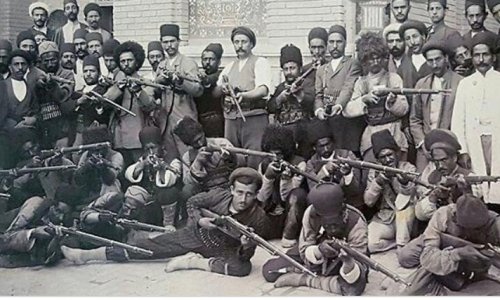
Bazaar
Stalls and shops lined up forming a spine, the economic center of cities in the Middle East. this has been called bazaar, since the dawn of time.
Bazaar
Stalls and shops lined up forming a spine, the economic center of cities in the Middle East. this has been called bazaar, since the dawn of time
A covered market, with a thousand and one entrances and alleys, airy and lighted. A setting that holds madrassas, caravanserais, schools and hammams. As it used to be a city inside a city.
A corridor where inhabitants meet, both merchants and customers.
A store, goods, there is as much food as diamonds.
Side by side, bakeries beside jewelry stores, each one to his own business,expertise and customers.
It wraps around the time and sets its course according to the currents and the surrounding environment..
The heirs are named after the parents, and the previous ones are remembered with nostalgia.
The bazaar has thousands of secrets and offers a chance to all beginners, with or without experience and money.
Don’t be surprised by the number of stalls, no competition problem, they all earn as the Omnipotent promises
History of Coffee in Iran
The history of coffee in Iran dates back to the Safavid period of the 17th century, probably a tradition borrowed from the Ottomans.
History of Coffee in Iran
The history of coffee in Iran dates back to the Safavid period of the 17th century, probably a tradition borrowed from the Ottomans.
Drinking coffee seems to have been a popular habit among Iranians before tea plants were introduced and cultivated in Iran in the 19th century.
The cultivation of tea, especially in the northern regions of the country, has gradually led to the replacement of coffee. Perhaps the subtle, sweet taste of local production has won the favor of consumers over the bitterness of the expensive importation of coffee.
The old Kahveh-Khaneh, literally coffee houses, while keeping their name, now serve tea.
The traces of coffee are still to some extent preserved in some communities such as the Armenians. Likewise, certain customs continue to exist, such as offering coffee powder at funerals to share the feeling of bitterness felt during the loss of a loved one with the family of the deceased.
After the Islamic revolution, a long list of prohibitions imposed themselves on the menu of Iranian pleasures. Alcoholic beverages and narcotics such as opium are banned; coffee, although suspect in the eyes of fanatics, escapes them and is favored by it.
Iranians have always appreciated the taste of bitterness, to such an extent that in the popular language, opium, medicine for all ailments and sorrows was called “talkhi” literally bitterness, which explains the keen interest of former consumers. of opiates for coffee in Iran.
It was not until the end of the Iran-Iraq war for a relative opening of the market and the improvement of the country’s economy in order to allow Iranians to go further in the world of flavors and gustatory pleasures, once liberated. worries of war.
Coffee and its accessories find their place among imported luxury items and “Farang” souvenirs. Iranians attribute this term to everything that comes from the West in general, it is the Iranian version of the word France.
Drinking coffee is therefore timidly done in intellectual and artistic circles looking for an ally to face intellectual rather than physical fatigue, a subject of rivalry against its infused adversary, tea.
But this time, the coffee is no longer initiated in the old Kahveh-Khaneh where it was deposed a century before.
These coffee houses have given way to a novelty: the cofee-shop. A relaxed atmosphere with modern or muted decor, background music, this is where you have to pay relatively dearly for cups of this beverage, drunk by the finesse of candle light.
An ideal refuge for young singles, away from the suspicious eyes of the street to meet and discuss the thousand and one ways to drink coffee, or other things …
The reopening of Iran’s borders after the war to foreign travelers, their strong demand for coffee consumption could be a factor in the development of trade in this seed, especially in restaurants and hotels.
Gradually, players in the coffee industry are starting to learn about this product and following increasing public demand, start importing coffee beans from Brazil and other producing countries. Instead of importing the expensive European brands, local brands appear and the roasting machines are activated imitating the European model.
The Iranian palate has a preference for Robusta and Arabica flavors, and Italian espresso brands are very popular.
Filter coffee, say the third generation of coffee, is increasingly popular with those looking for more flavor and simpler preparation.
Various exhibitions are held every year in Iran, an opportunity to keep up to date with the latest trends and current events in the coffee industry.
Today, coffee has definitely found its place in the menu of pleasures as well as in the hearts of Iranians, so much so that its bitter taste has nothing to envy to the popularity of the sweetness of tea!

Tazieh, a religious Theater
It is a kind of traditional Iranian religious theater, performed on the occasion of the martyrdom of Hossein, grandson of the prophet Mohamed in Karbala in 681 AD.
These performances are intended to commemorate and share the pain of the drama, and the oppressions inflicted by Yazid, the son of Muawyia on the family of the Prophet.
Tazieh, a religious Theater
It is a kind of traditional Iranian religious theater, performed on the occasion of the martyrdom of Hossein, grandson of the prophet Mohamed in Karbala in 681 AD.
These performances are intended to commemorate and share the pain of the drama, and the oppressions inflicted by Yazid, the son of Muawyia on the family of the Prophet.
This style of performance originated in the Qajar era, in the 19th century, and is literally based on a tradition collected orally.
Some peculiarities that we find in each performance of this living scene:
– The spectacle sometimes lasts a whole day from morning until sunset or until the assassination of Hossein.
– All dialogue recounts the strong moments to the rhythm of litanies to sadden and make the spectators cry. Long texts sung in poetry are recited according to manuscripts kept by the actors.
– Normally the role of women is played by men veiled in black.
– The Imam and his companions (the oppressed) are dressed in green and the yazidi (the oppressors) in red.
– At midday, during prayer there is an intermission, lunch is provided for all the spectators, an ex-voto from generous donors.
– A whole orchestra of percussions and flutes accompany the show.
– An extra cavalry in charge of mounting a horse accompanied by music, turns around the stage on command.
– The staging is done live in full view of the spectators, there is no backstage.
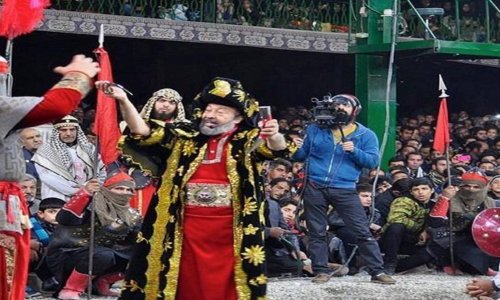
Pleasure of Iranians, traveler’s nightmare
Traditionally the Iranians eat on the floor,
by installing a tablecloth and putting the cutlery on the carpet, in the main room of the house.
Pleasure of Iranians, traveler’s nightmare
Traditionally the Iranians eat on the floor, by installing a tablecloth and putting the cutlery on the carpet, in the main room of the house.
Although the table has found its place in the daily comfort of Iranian homes, the pleasure of eating on the floor subsists and remains a beautiful tradition to be perpetuated.
The opening of many traditional restaurants in the old towns that offer this possibility is enjoying unprecedented success. The rooms of the old traditional residences are furnished, painted and often decorated with a mirror, transformed into private living rooms. It is an ideal choice for families and especially for honeymooners who seek more privacy, which allows women to be more comfortable enjoying their meals, by slightly removing their hijab.
These restaurants are very popular with travelers, curious to discover the art of living and the taste of local gastronomy through this traditional way of eating with family or in groups.
But once you ask them to take off their shoes and sit on the floor, that’s another story!
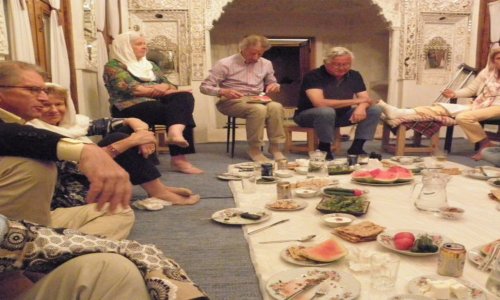
Where to find the ice in summer
Ice dump in Kerman is a conical structure made out of straw and clay which covers a big hemisphere reservoir dug in the ground.
It was a place for preserving the ice.
Where to find the ice in summer?
Ice house is a conical structure made out of straw and clay which covers a big hemisphere reservoir dug in the ground. we find it usually in iran in desert cities as well as Kerman and Yazd. It was a place for preserving the ice. There are some big shallow ponds and high walls near the ice dump to make the ice on winter nights. Every night water was poured into the pond and at night it turned into ice. The ice was taken into the reservoir and a stash of straw was placed between the layers to isolate it. The reason that they made the structure like a cone is because of preventing the heat from entering the ice dump. After filling up the Ice dump, they keep it close until summer and after that, they brought the ice to the city to sell it; in the ceremonies, they use the ice for making the syrup and cold water for the guests, a real refreshing beverage.

